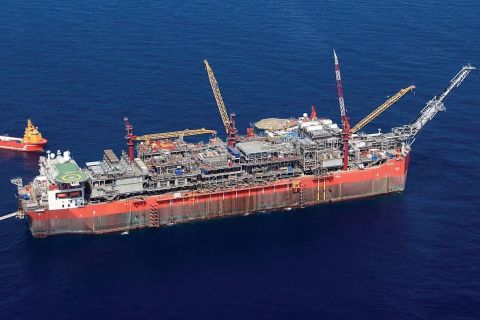Learn more about Hart Energy Conferences
Get our latest conference schedules, updates and insights straight to your inbox.
 About three and a half years ago I returned as editor-in-chief of this magazine and wrote this column after an absence of just over a decade.
About three and a half years ago I returned as editor-in-chief of this magazine and wrote this column after an absence of just over a decade.
I had been lucky enough to write E&P’s first-ever such column in its launch issue back in October 1999, later leaving to venture into pastures new until returning to these pages in 2013 and completing the circle. Things are pretty cyclical in the oil business too, of course, so it’s a familiar pattern.
In my returning column in that year’s August issue I noted that when I’d last penned a column in late 2000 Brent crude was about $25/bbl. Hart Energy had launched E&P the year before with the price less than half that. But in August 2013 the price was a meteoric $108/bbl, riding the crest of a demand wave.
We all know what’s happened since then, with the industry’s cyclical nature once again taking it to brutal lows, but it’s bouncing back off the ropes. Today Brent crude sits around the $53/bbl mark—a year earlier it was just over half that. Sound familiar?
The signs are those of cautious momentum. It’s still fragile, but the industry is now in a stronger, leaner condition (hopefully having retained recent experiences) so that it can sensibly grow activity without reigniting the fuse of the ticking time bomb represented by project costs.
Oil demand is still rising. In E&P’s launch year global consumption was at a similar level to oil and liquids production of 74.5 MMbbl/d. Output rose to 77.9 MMbbl/d by year-end 2000, again tracked by consumption, and was at nearly 90 MMbbl/d in mid-2013. In November 2016 global oil and liquids supplies were at a record high of 98.2 MMbbl/d, but if the OPEC and non-OPEC producers’ planned output cut in January of 1.75 MMbbl/d is successfully implemented, it is expected to bring the market back into supply/demand balance by mid-year. Global oil consumption is now about 96 MMbbl/d, with 2016’s forecast growth put at about 1.4 MMbbl/d and 2017’s estimated rise put at 1.3 MMbbl/d, according to the International Energy Agency.
OPEC also has signaled that higher cost producers (U.S. shale players take note) should not take it for granted that they can simply catch a free ride back to higher production. If these production cuts succeed in putting a firmer floor under oil prices, high-cost producers should proceed with restraint when sanctioning new investments. Too greedy a grab for a larger short-term slice of production could spike the whole deal and send the industry into a death spiral.
Can this global multicultural industry demonstrate true collaboration for the greater good? I for one don’t know. But as I’m off to pastures new once more, maybe I’ll come back in a decade and check up on you all.
I’d like to wish everyone all the best in their business and family lives, and I sincerely thank each and every one of our readers for supporting E&P as it continues to cover this truly unique business better than anyone else.
Recommended Reading
TotalEnergies Starts Production at Akpo West Offshore Nigeria
2024-02-07 - Subsea tieback expected to add 14,000 bbl/d of condensate by mid-year, and up to 4 MMcm/d of gas by 2028.
Tech Trends: SLB's Autonomous Tech Used for Drilling Operations
2024-02-06 - SLB says autonomous drilling operations increased ROP at a deepwater field offshore Brazil by 60% over the course of a five-well program.
Seadrill Awarded $97.5 Million in Drillship Contracts
2024-01-30 - Seadrill will also resume management services for its West Auriga drillship earlier than anticipated.
Well Logging Could Get a Makeover
2024-02-27 - Aramco’s KASHF robot, expected to deploy in 2025, will be able to operate in both vertical and horizontal segments of wellbores.
Remotely Controlled Well Completion Carried Out at SNEPCo’s Bonga Field
2024-02-27 - Optime Subsea, which supplied the operation’s remotely operated controls system, says its technology reduces equipment from transportation lists and reduces operation time.





